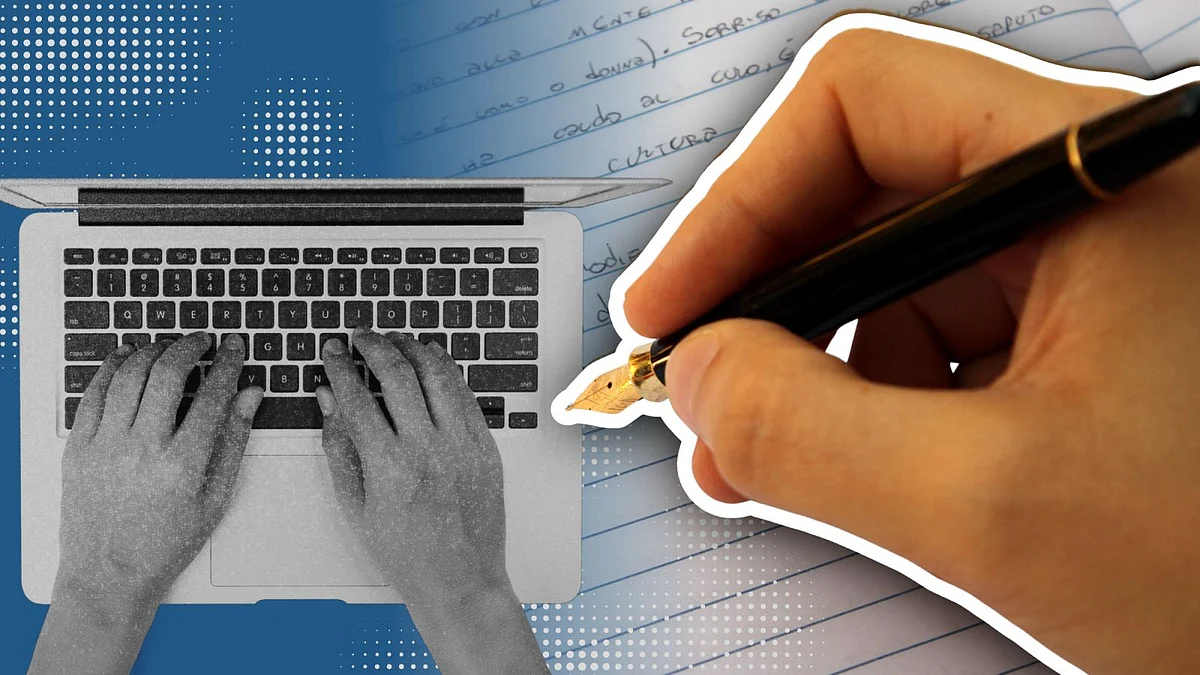Copyright tribune

Admit it – you don’t remember the last time you used a pen to write a report or a letter. There is no need – There is a laptop for that.The laborious process of tracing out our thoughts, letter by letter, on the page is becoming a relic of the past in our screen-dominated world, where text messages and thumb-typed grocery lists have replaced handwritten letters and sticky notes. Electronic keyboards offer obvious efficiency benefits that have undoubtedly boosted our productivity — imagine having to write all your emails longhand.To keep up, many schools are introducing computers as early as preschool, meaning some kids may learn the basics of typing before writing by hand.But giving up this slower, more tactile way of expressing ourselves may come at a significant cost, according to a growing body of research that's uncovering the surprising cognitive benefits of taking pen to paper, or even stylus to iPad — for both children and adults.In kids, studies show that tracing out ABCs, as opposed to typing them, leads to better and longer-lasting recognition and understanding of letters. Writing by hand also improves memory and recall of words, laying down the foundations of literacy and learning. In adults, taking notes by hand during a lecture, instead of typing, can lead to better conceptual understanding of material."There's actually some very important things going on during the embodied experience of writing by hand," says Ramesh Balasubramaniam, a neuroscientist at the University of California, Merced. "It has important cognitive benefits."A slew of recent brain imaging research suggests handwriting's power stems from the relative complexity of the process and how it forces different brain systems to work together to reproduce the shapes of letters in our heads onto the page. Write or type Both handwriting and typing involve moving our hands and fingers to create words on a page. But handwriting, it turns out, requires a lot more fine-tuned coordination between the motor and visual systems. This seems to more deeply engage the brain in ways that support learning."Handwriting is probably among the most complex motor skills that the brain is capable of," says Marieke Longcamp, a cognitive neuroscientist at Aix-Marseille Université."Your fingers have to each do something different to produce a recognizable letter," says Sophia Vinci-Booher, an educational neuroscientist at Vanderbilt University. Adding to the complexity, your visual system must continuously process that letter as it's formed. With each stroke, your brain compares the unfolding script with mental models of the letters and words, making adjustments to fingers in real time to create the letters' shapes, says Vinci-Booher. That's not true for typing To type "tap" your fingers don't have to trace out the form of the letters — they just make three relatively simple and uniform movements. In comparison, it takes a lot more brainpower, as well as cross-talk between brain areas, to write than type.Recent brain imaging studies bolster this idea. A study published in January found that when students write by hand, brain areas involved in motor and visual information processing "sync up" with areas crucial to memory formation, firing at frequencies associated with learning."We don't see that [synchronized activity] in typewriting at all," says Audrey van der Meer, a psychologist and study co-author at the Norwegian University of Science and Technology. She suggests that writing by hand is a neurobiologically richer process and that this richness may confer some cognitive benefits.Other experts agree. "There seems to be something fundamental about engaging your body to produce these shapes," says Robert Wiley, a cognitive psychologist at the University of North Carolina, Greensboro. "It lets you make associations between your body and what you're seeing and hearing," he says, which might give the mind more footholds for accessing a given concept or idea. What might be lost as handwriting wanes The clearest consequence of screens and keyboards replacing pen and paper might be on kids' ability to learn the building blocks of literacy — letters."Letter recognition in early childhood is actually one of the best predictors of later reading and math attainment," says Vinci-Booher. Her work suggests the process of learning to write letters by hand is crucial for learning to read them."When kids write letters, they're just messy," she says. As kids practice writing "A," each iteration is different, and that variability helps solidify their conceptual understanding of the letter.Ditching handwriting instruction could mean that those skills don't get developed as well, which could impair kids' ability to learn down the road.



